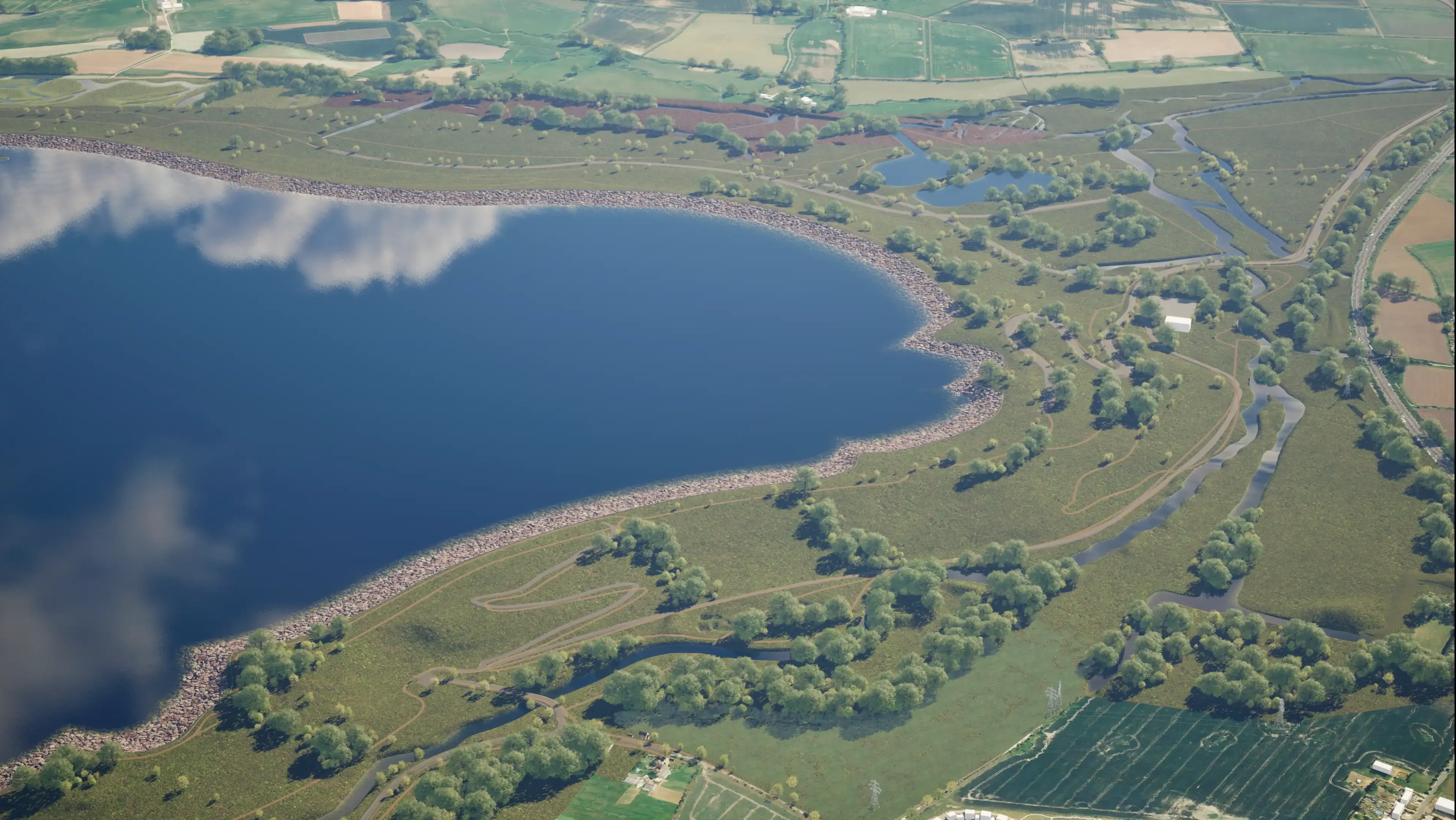
South East Strategic Reservoir Option (SESRO)
A new reservoir for the South East.
We’re developing proposals for a vital new drought resilience project for London.
In autumn 2023 we held a public consultation on initial site options for the project, focusing on the potential locations of new structures, tunnels and shafts.
We received over 2,300 responses and have read and considered them all, whilst re-evaluating our designs. We’ve now introduced several changes to our proposals, including:
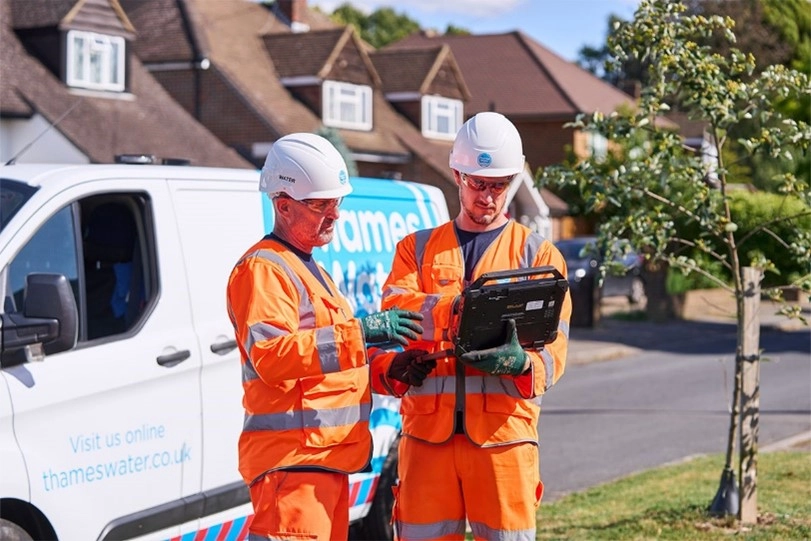
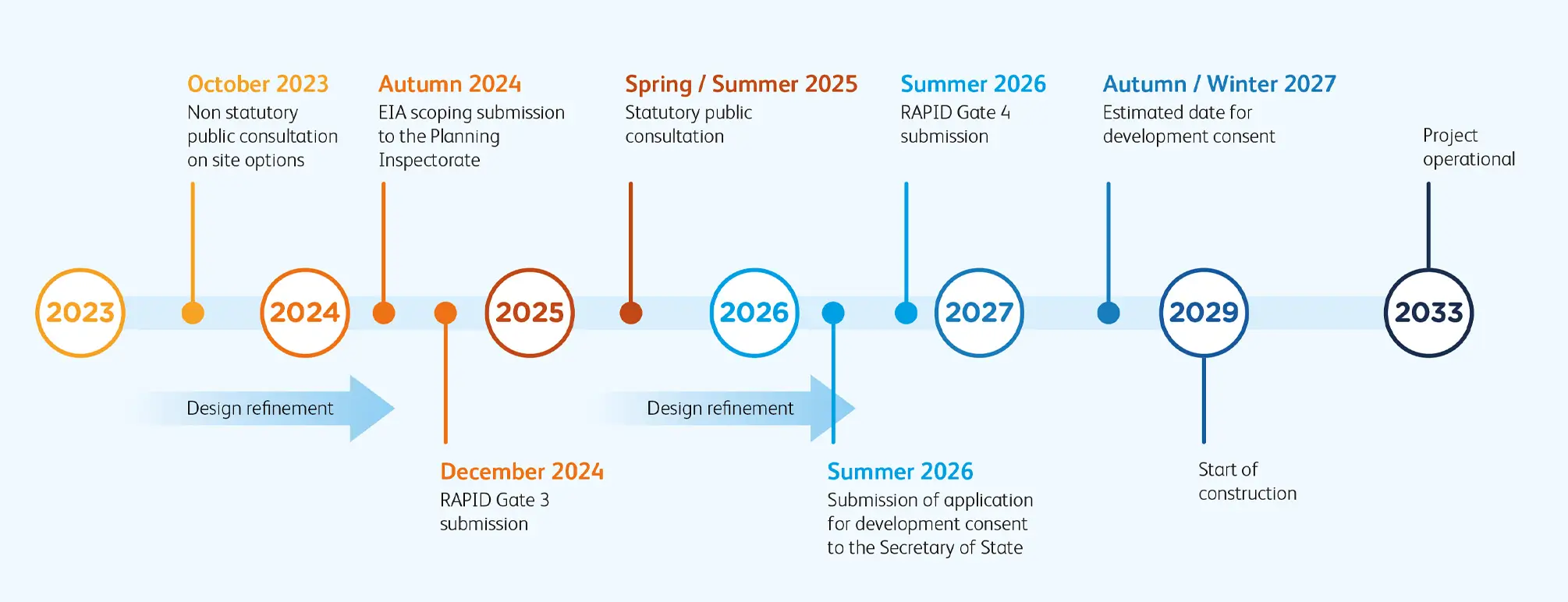
In autumn 2024, we held a series of community information events focusing on the design changes that we’ve made. In 2024 and 2025, we’ll continue our design work and assessments, including ground investigations. After successfully installing temporary equipment at Mogden sewage treatment works, we’ll keep running the ongoing tertiary treatment trial for at least 12 months. The trial will be supported by off-site laboratory testing and the results will be reviewed by the Environment Agency to help determine whether a discharge licence should be granted in the future.
You can stay informed and up-to-date on the progress we’re making on our project by reading our latest news.
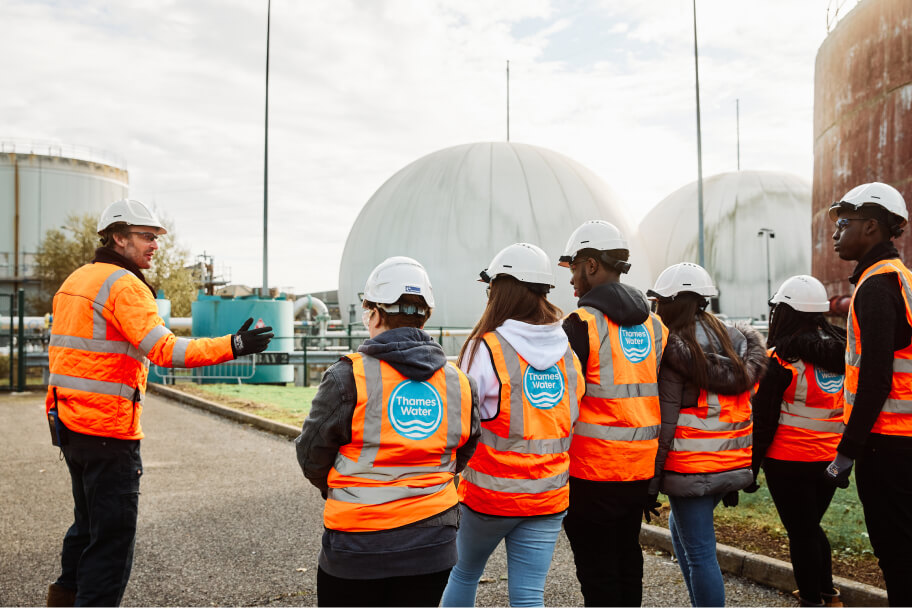
We forecast to supply drinking water to nearly 13 million people by 2050 in the Thames Water area, including over 10 million people in London.
Additionally, with the UK set to experience more extreme heat events, we need to plan ahead to develop new water supply solutions. One of the vital new projects we’re proposing for London is a new river abstraction on the River Thames. This will ensure a reliable water supply during drought periods for residents, businesses, schools, hospitals and other essential services.
Working with Water Resources South East (WRSE), we’ve identified that the Teddington Direct River Abstraction (TDRA) project is the right solution to help protect London from the risk of drought.
We’re proposing a new river abstraction on the River Thames, supported by water recycling. The Teddington DRA project could provide up to 75 million litres of water each day during periods of prolonged dry weather.

Water would be abstracted from the river upstream of Teddington Weir and transferred along a section of new connecting pipeline to an existing underground tunnel to our reservoirs to become drinking water.
The abstracted water would be replaced with recycled water from Mogden Sewage Treatment Works in Isleworth, transferred to the river along a new underground pipeline to an outfall structure upstream of Teddington Weir. This way, we’d be able to access additional supplies of water from the river, while ensuring river levels are maintained and the river environment and ecology protected.
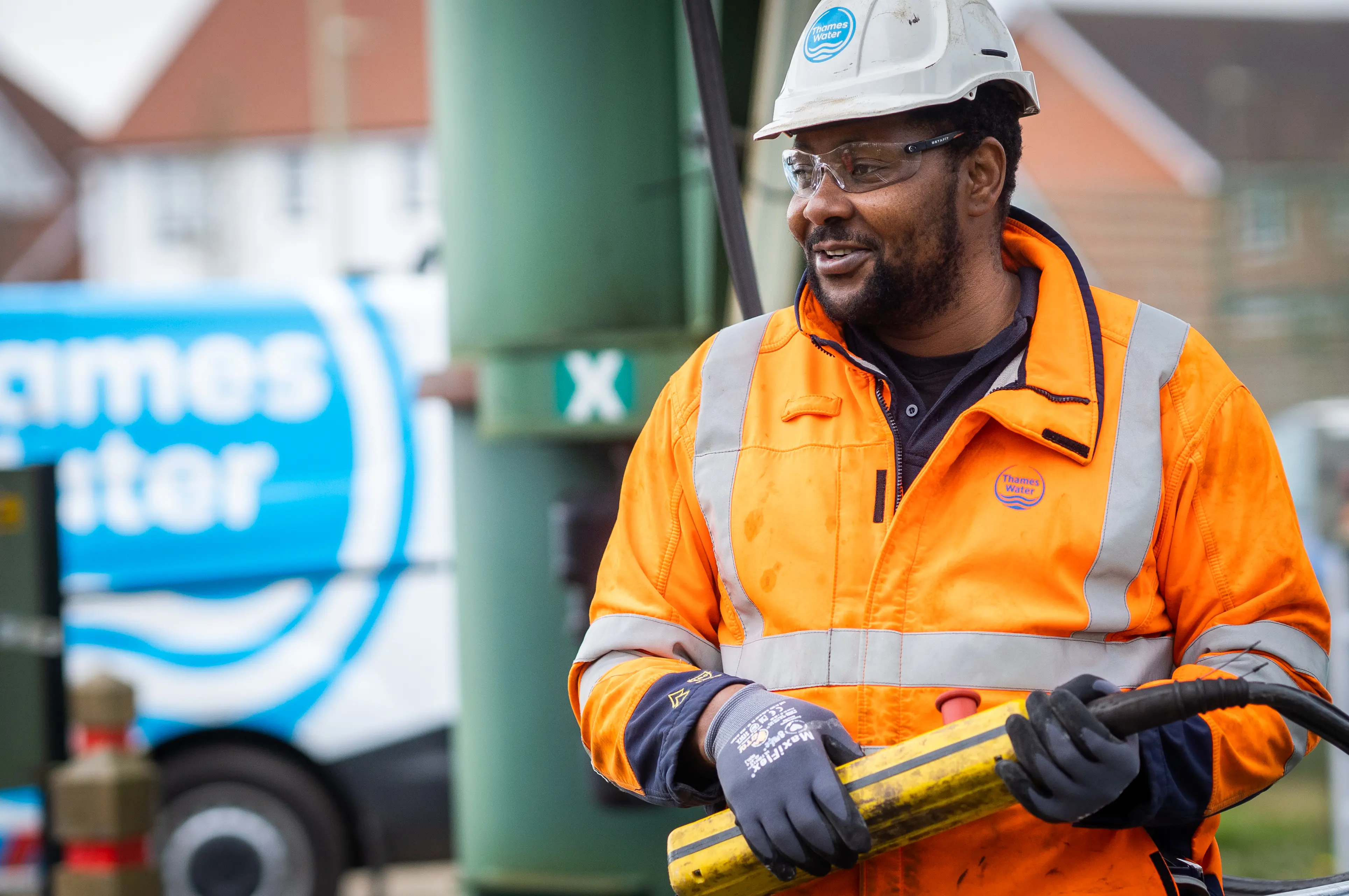
At the heart of this project is the use of water recycling, a tried-and-tested method. Rainwater flows into our lakes, rivers, and streams, as well as being absorbed into the ground. We abstract water from rivers and groundwater sources and treat it in our water treatment works to turn it into top-quality drinking water. We pump that to your taps via our network of 20,000 miles of water pipes. Once water’s been used, we call it wastewater. It goes down your drain or plughole into our network of sewer pipes. These lead to our sewage treatment works, where we treat the water until it’s clean enough to go back into the rivers.
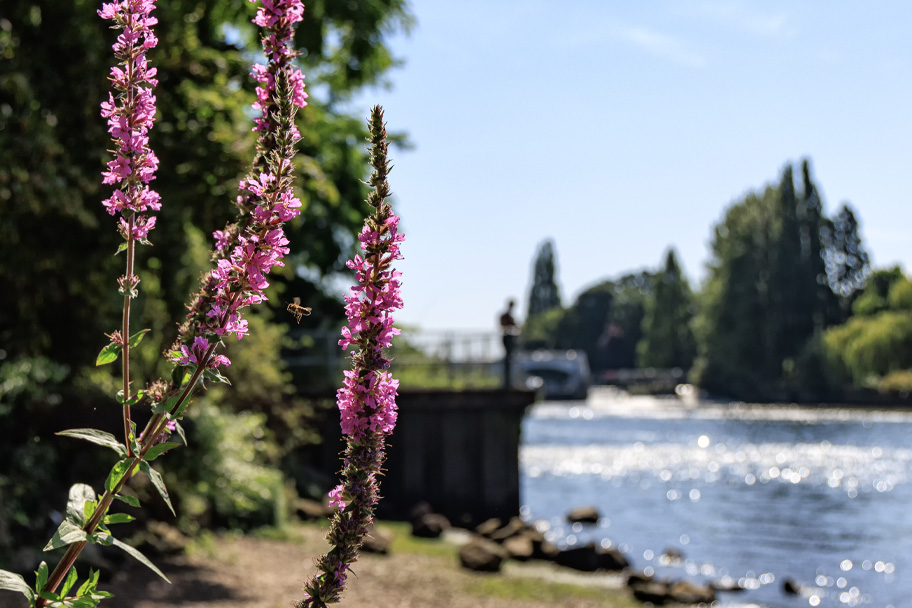
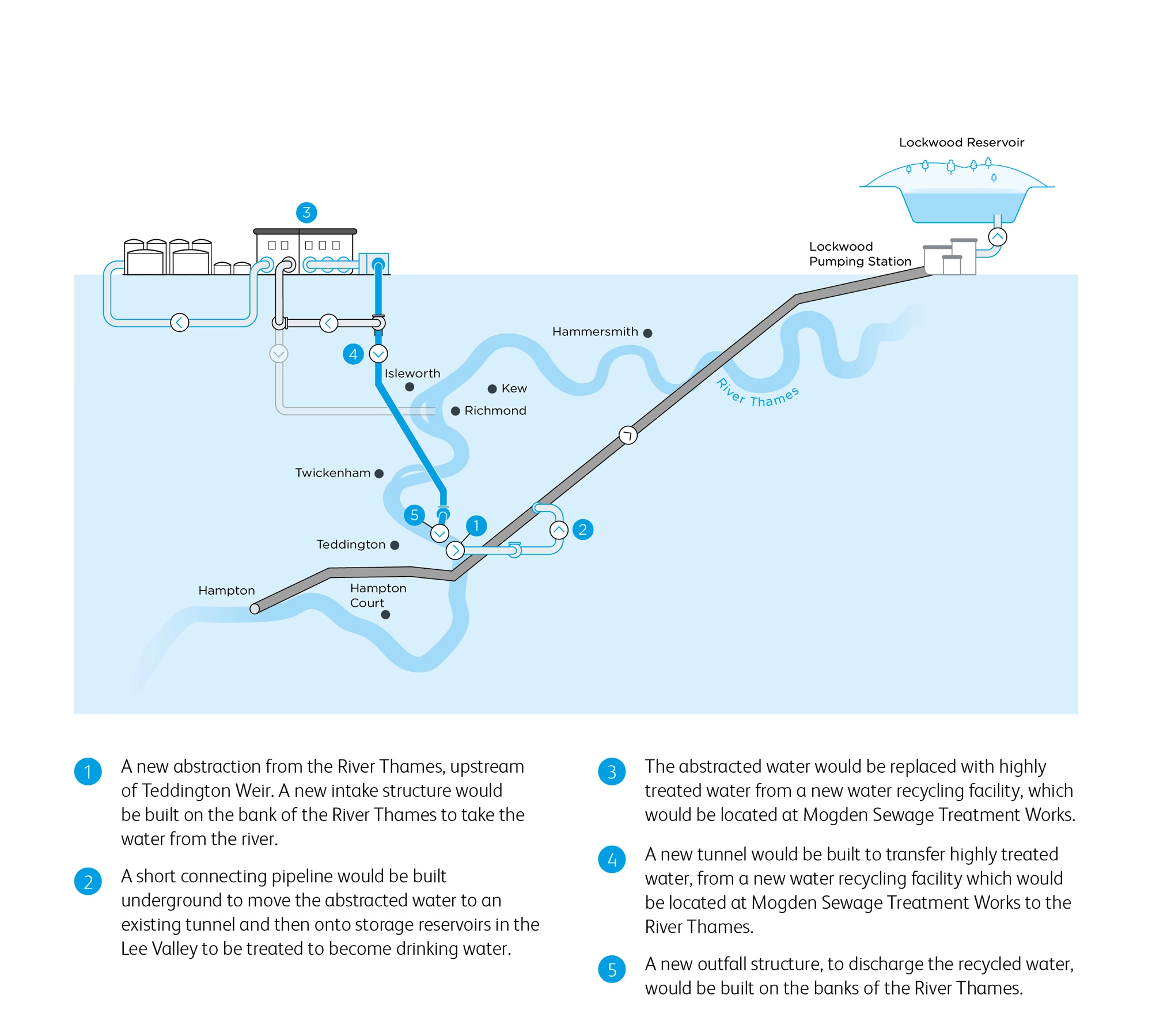
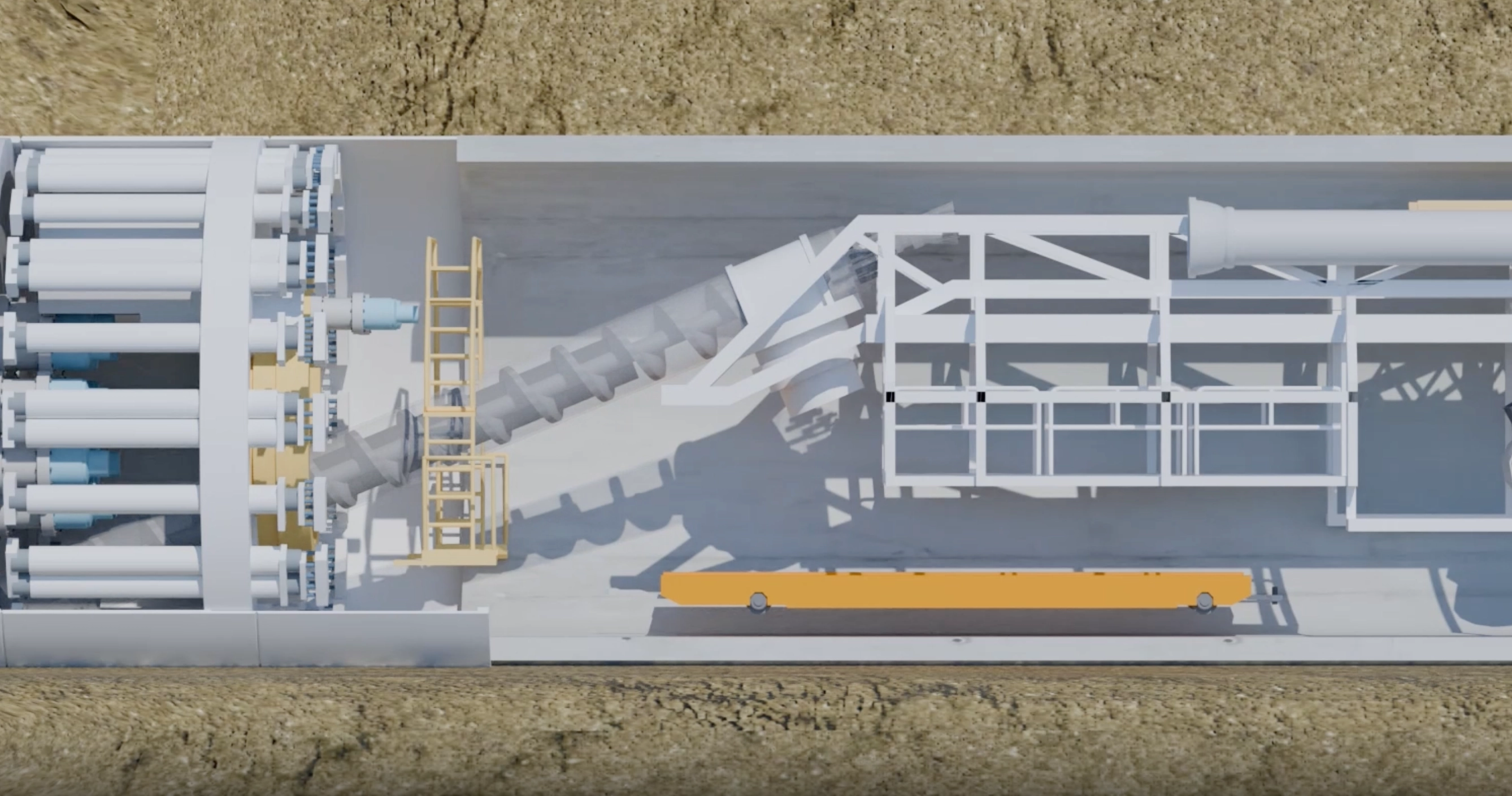
There would be rules governing when the project could be used. We’d only use it during periods of prolonged dry weather, typically between late summer and late autumn, on an intermittent basis. In order to keep the treatment facility in good working order at other times, we’d need to run water through it, at a low volume, called a “sweetening flow”.
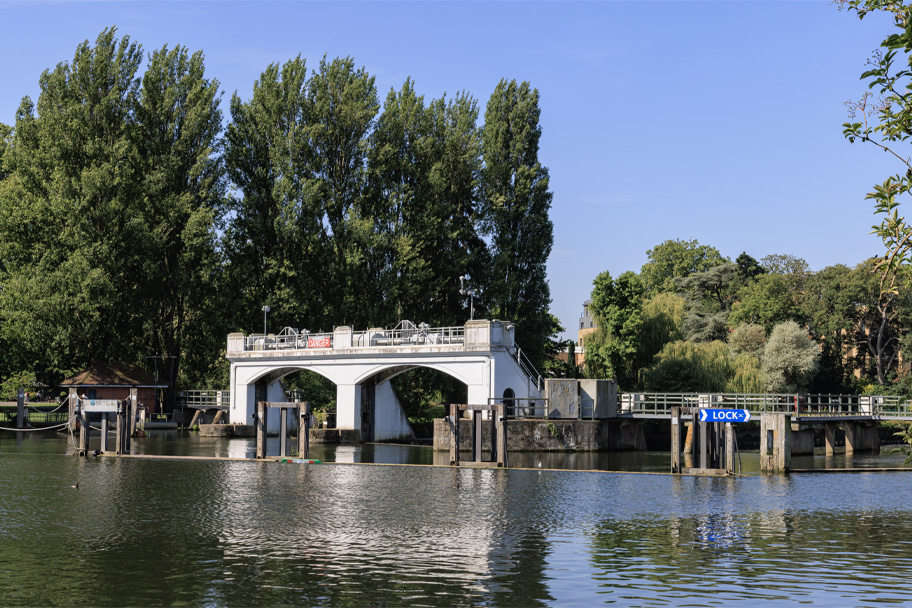
Over the next couple of years, reflecting on feedback that we receive during our engagement and public consultations, we’ll be developing designs for the proposed tertiary treatment facility, new pipelines and shafts, and intake and outfall structures.
Our proposals for the TDRA project are overseen by RAPID (Regulators’ Alliance for Progressing Infrastructure Development), a consortium of water industry regulators. RAPID has implemented a ‘gated’ regulatory process to ensure that all new strategic water supply options are considered in a fair, consistent and transparent way, and that our customers’ money is spent wisely.
More information about RAPID and the gated process can be found here, where you will also find the technical reports, additional information provided to RAPID and feedback from RAPID relating to the project.
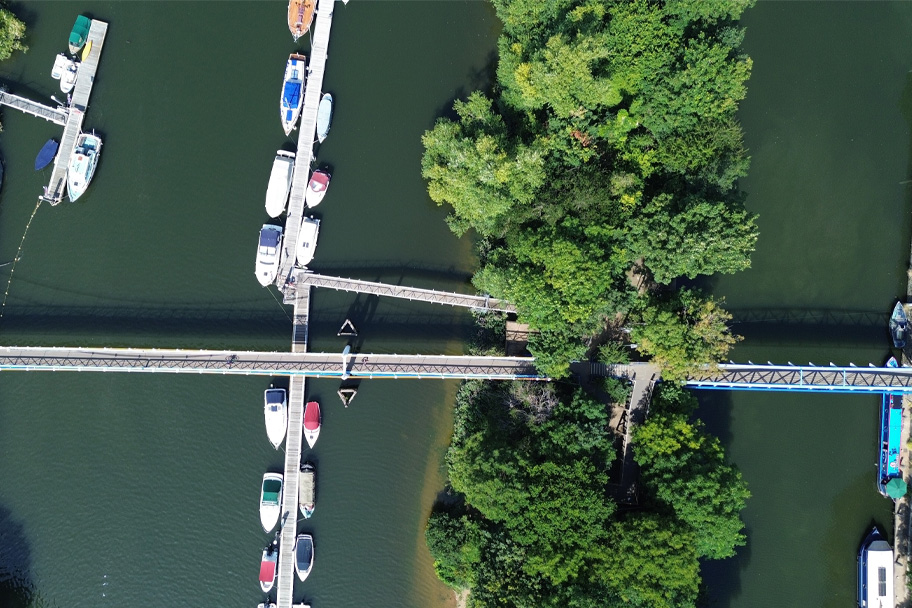
In December 2023, the Secretary of State confirmed that the TDRA project should be treated as a development of national significance for which a Development Consent Order (DCO) is required. Details of the Request and the Decision are available on the Defra website.
The DCO process provides opportunities for people to have their say on the proposals before a final decision is made by the Secretary of State. Before formally applying for a DCO, Thames Water must carry out public consultation and consider feedback.
Find out more about the DCO process in our factsheets in the Document Library.
More information is also available on the Planning Inspectorate website.
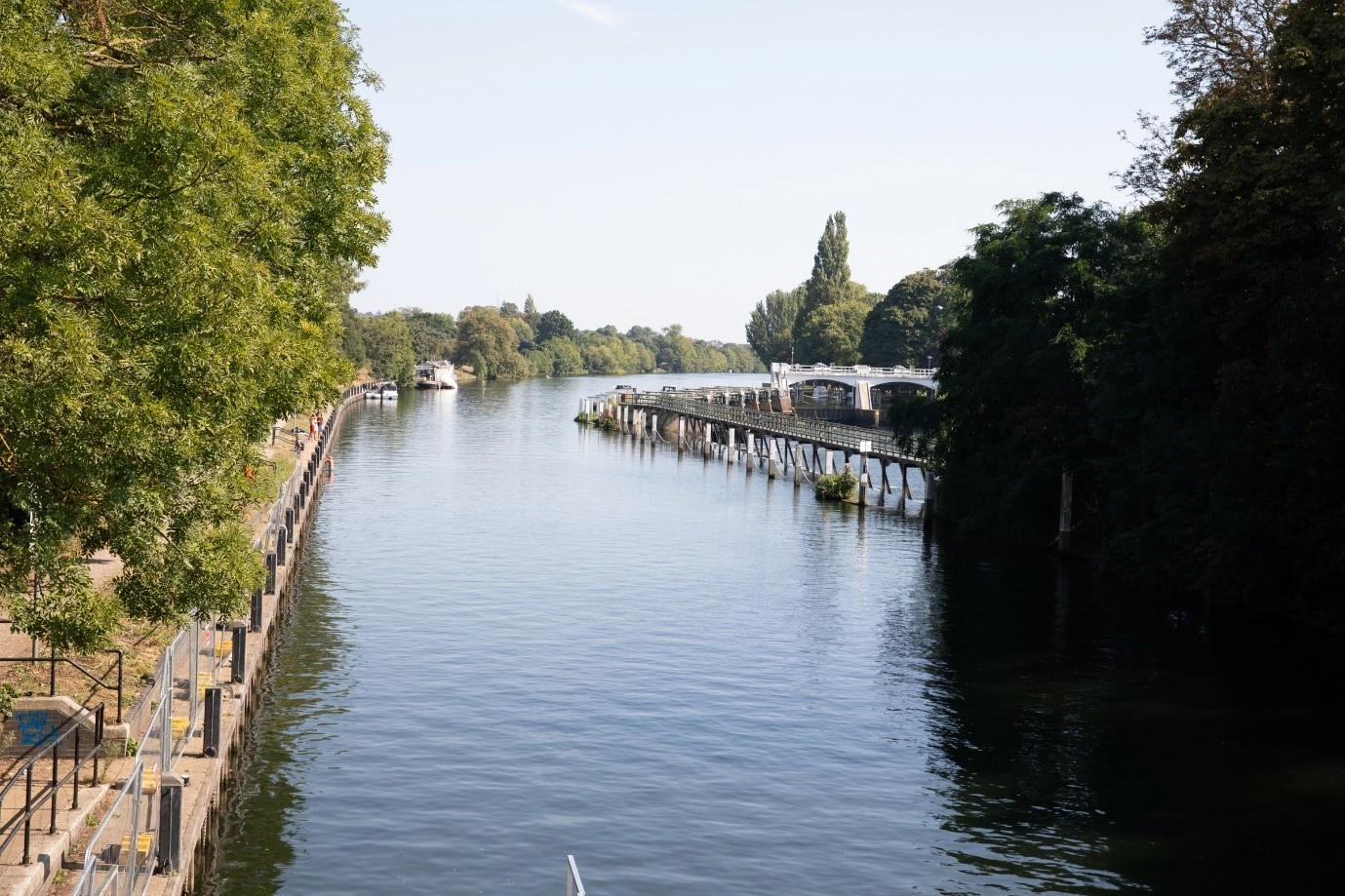
Since September 2024, we’ve been conducting essential ground investigation surveys to gather important information about local ground conditions. This data is key to shaping our design, particularly in determining the alignment of the proposed tunnel and pipeline. Our team has been carefully extracting soil and rock samples from boreholes (narrow shafts drilled into the ground), a process that helps us understand the local geology.
We’ve kept local residents informed about this work and have been collaborating closely with various stakeholders, including local councils, to ensure we minimise any disruptions to the community. We are on track to complete the borehole drilling by Spring 2025, after which the boreholes will remain in place for an additional six months to monitor groundwater levels. Once this work is complete, the borehole equipment will be removed, and the ground will be restored to its original condition, a process that typically takes one to two days.
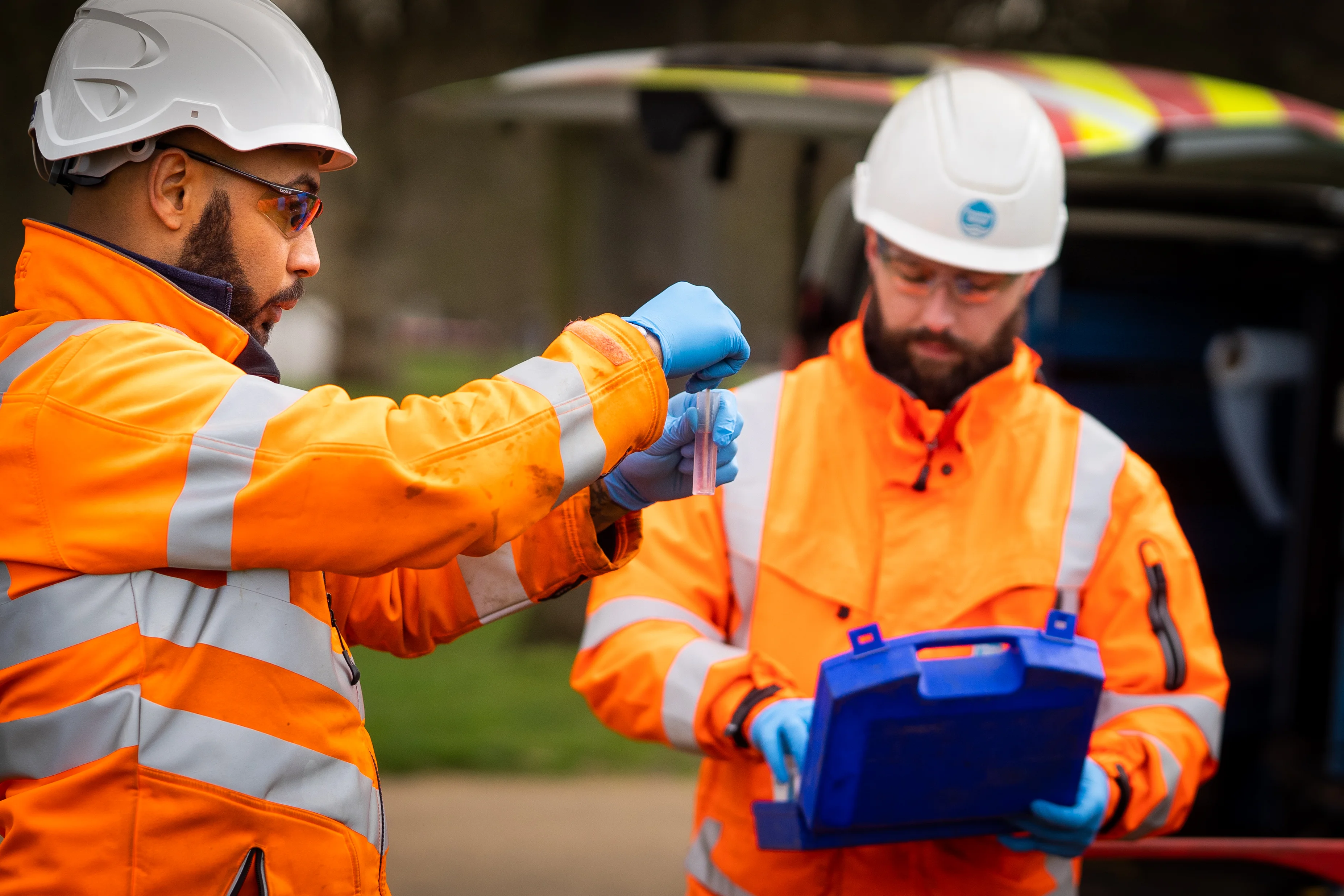
In addition to the ground investigations, we’re also continuing other important assessments, such as environmental and recreational surveys. These surveys help us to better understand the local area and it's ecology, as well as how the community use it.
For those interested in more information on the project area, we’ve published a map book which shows our current proposals for the locations of new infrastructure and temporary worksites for the project. You can access the map book information here.
We remain committed to actively engaging with a wide range of stakeholders and local residents as we refine our designs. Looking ahead, we’re planning to hold a statutory public consultation on our proposals later in 2025. Before then, we’ll publish a Statement of Community Consultation, explaining how we’ll consult and work with local communities.
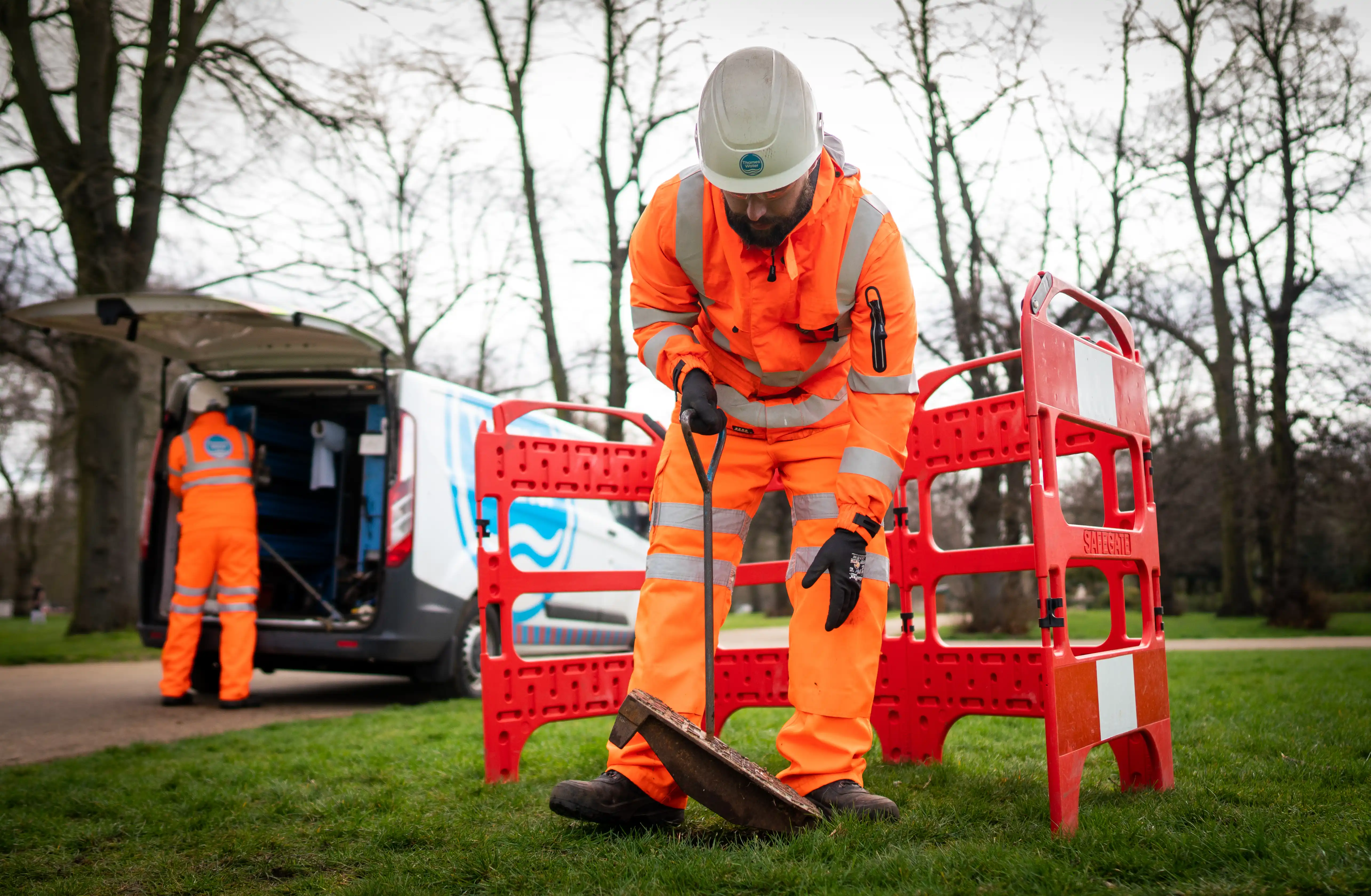
You can find further project information in the document library here.
To stay up to date on all the latest project news you can read our newsletter here. Printed copies of the newsletter are also available at the following locations:
If you have any questions, please contact us.
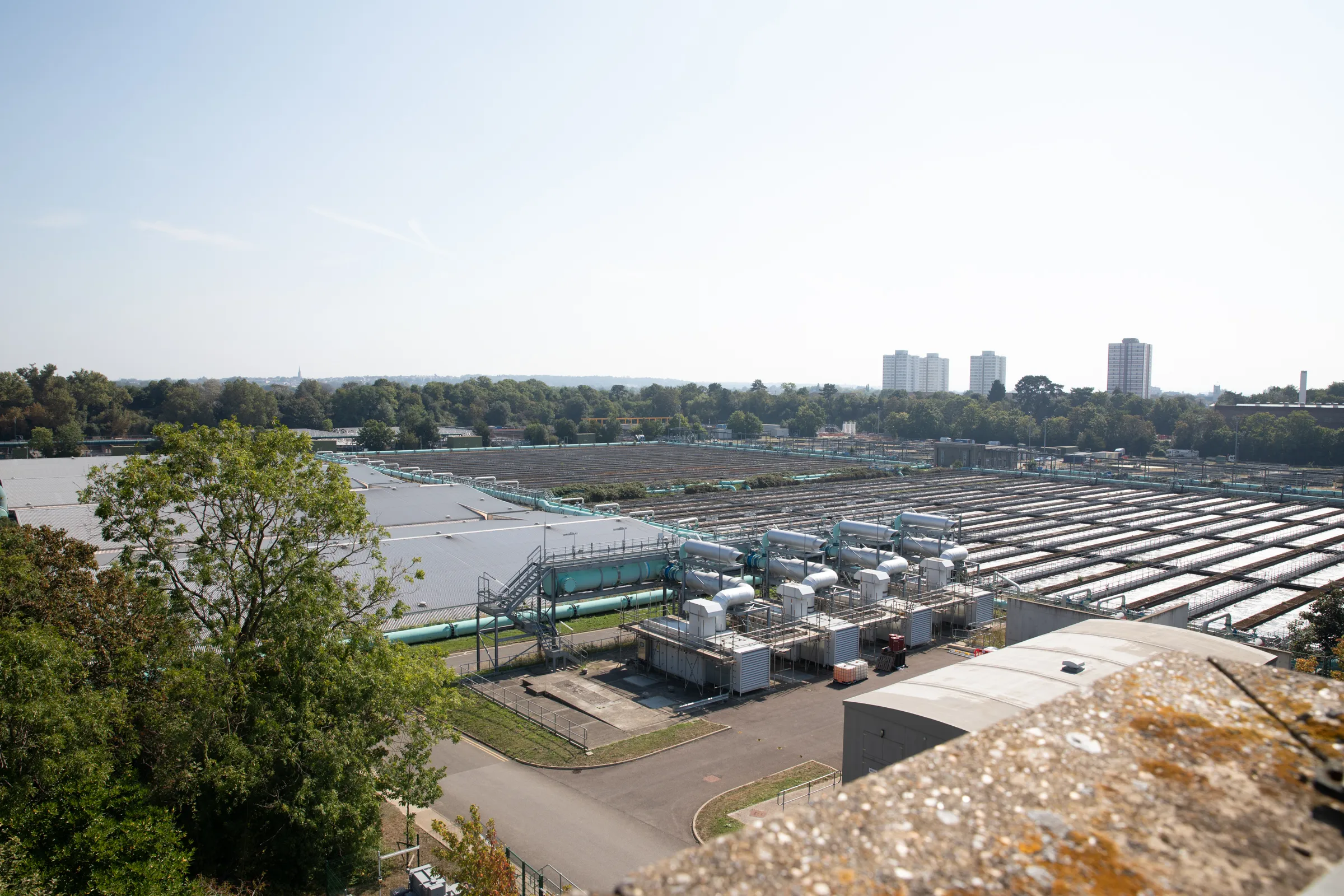

A new reservoir for the South East.
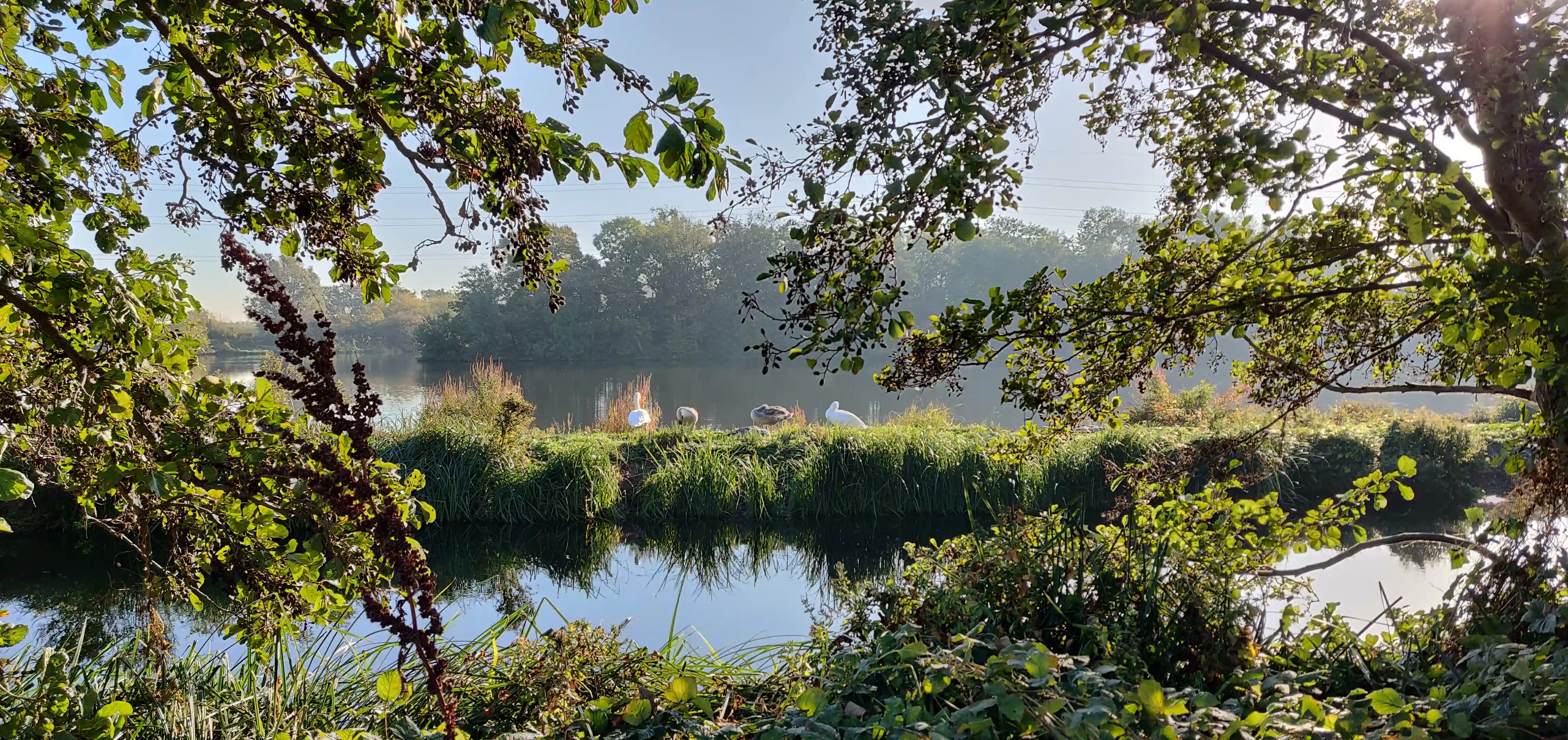
Considering water transfer options.